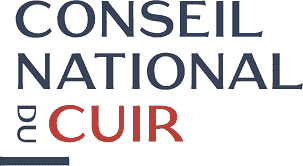Are leather and CSR compatible? Aware of its environmental and societal involvement, the leather industry, which encompasses more than 100 professions and 12,800 companies in France, generating 25 billion euros in turnover, including just over 13 billion for export, unveiled , Tuesday, June 21, a White Paper in five proposals. In particular, it highlights the need to ensure the good treatment of animals, to put people first or to better dialogue with consumers. At a time when the fake news abound on social networks, a sort of new barometer of the societal pulse, Franck Boehly, who chairs the National Leather Council (CNC), wanted to set the record straight: ” Not called “leather” who wants. There is a decree dating back to 2010 which obliges to label “leather” leather articles of animal and non-vegetable origin “. Despite everything, the confusions and abuse of language – pineapple leather, cactus leather, synthetic leather – persist, to his greatest displeasure.
Binding regulations
Highly sensitive subject, because playing on emotion, animal welfare could not not be mentioned. Here again, the president of the CNC wanted to clarify things: “ No, the animals are not raised for their skin but first and foremost for their meat », he hammered, before recalling that ” IemThe leather industry is the oldest recycling activity”. In terms of animal welfare, French and European regulations “ are very advanced “, he pointed. More than 15,000 control operations are carried out every year by the State services. The sector has already devoted 19 million euros to improving conditions, in particular by vaccinating animals against ringworm, a skin infection caused by a microscopic fungus. ” The skin is the barometer of an animal’s health. Our industry being positioned at the top of the range, we need to have a good quantity of top quality skins and, therefore, that the animals are well treated. “, underlined Franck Boehly. Labels have emerged, such as Leather is in the meadow, which works with cows born and raised on farms in Mayenne, Sarthe and Orne, spending at least six months of the year in the pastures.
Beyond animals, the environmental impact of the leather sector, in particular its tannery and tannery branch, is often singled out for its water consumption and its use of chemicals, such as chromium. ” All activity has an impact on the environment, there is no denying it. Our goal is to limit this impact, we are in continuous improvement “, estimated Franck Boehly. Here again, there are labels and regulations, such as the ICPE framework, which requires manufacturers to comply with pollutant emission limit values. At European level, the Reach standard governs the use of chemical substances.
Reindustrialize
Obviously, a sector does not exist if there are no companies and employees. At a time when manual trades are little or not valued, the leather sector suffers from a lack of manpower. Many companies also lack the necessary financial resources, especially the youngest among them. To help them, support funds and platforms are multiplying, such as Cuir Invest or Faire de lance, a new link intended to revitalize the activity of leather goods and footwear, whose ecosystem has been considerably reduced in France. There are also more local initiatives. Launched in 2020, Proto en mains aims to revive industrial production in Romans-sur-Isère, the former shoe capital, which has declined as companies have relocated. ” Footwear represents a major source of local jobs, ensuring the emergence of ancillary trades, such as logistics, and contributing to the enhancement of territories. “, boasts Franck Boehly.
